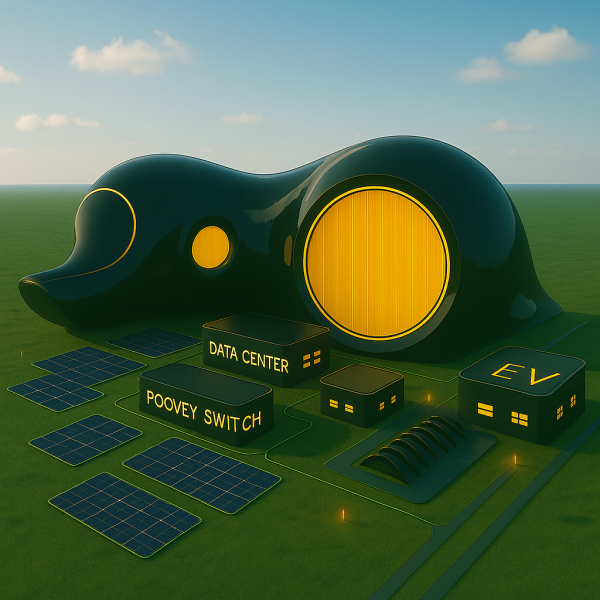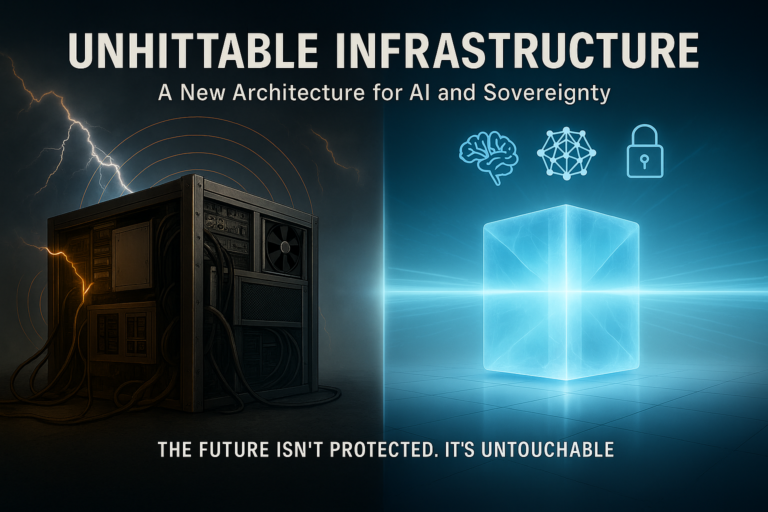Introduction
The computing world stands at a fascinating crossroads in 2025. As traditional electronic processors approach their physical limits, a revolutionary alternative is gaining momentum: photonic processors. These light-based computing systems promise to overcome the limitations that have begun to slow down electronic computing advancement. But what exactly separates these two technologies, and why might photonic processing be the future of computing?
In this comprehensive guide, we’ll explore the fundamental differences between photonic and electronic processors, examining how they work, their unique advantages and limitations, and the exciting applications where each technology excels. Whether you’re a tech enthusiast, industry professional, or simply curious about the future of computing, this comparison will illuminate the key distinctions that make these technologies so different from each other.
The stakes couldn’t be higher. As computational demands from artificial intelligence, big data, and complex simulations continue to grow exponentially, the race to develop faster, more efficient processors has never been more critical. Could photons rather than electrons be the key to unlocking the next generation of computing power? Let’s dive in and find out!
The Fundamental Difference: Light vs Electricity
At their most basic level, electronic and photonic processors differ in the particles they use to transmit and process information:
Electronic Processors
Electronic processors rely on the movement of electrons through semiconductor materials to perform calculations. These systems have been the foundation of computing for decades, with billions of transistors packed onto modern chips to switch and control electrical signals.
In electronic processors:
- Information is encoded in the form of electrical charges
- Transistors serve as the fundamental building blocks, acting as switches and amplifiers
- Data moves through copper or metal traces between components
- Heat is generated as a byproduct of electron movement through resistive materials
Photonic Processors
Photonic processors, by contrast, use light (photons) to perform computations. Photonic semiconductors use light signals while traditional processors use electricity, with the advantage stemming from light’s ability to travel faster than electricity and across greater distances without losing signal strength.
In photonic processors:
- Information is encoded in properties of light (amplitude, phase, polarization, wavelength)
- Optical components like waveguides, beam splitters, and optical resonators replace transistors
- Data moves through optical waveguides or free space
- Significantly less heat is generated during operation
This fundamental difference in the information carrier (electrons vs. photons) creates cascading effects throughout the entire system architecture, leading to significant differences in performance, energy efficiency, and capabilities.
Speed and Bandwidth: Racing Ahead with Light
One of the most compelling advantages of photonic processors is their potential for vastly superior speeds compared to electronic counterparts.
Electronic Processing Speeds
Electronic processors have made remarkable progress over decades, with clock speeds reaching several gigahertz. However, they face fundamental physical limitations:
- Electron movement is limited by the resistance and capacitance of the materials
- Increasing clock speeds leads to exponentially higher power consumption and heat generation
- Signal interference becomes problematic at high frequencies
- The “interconnect bottleneck” where communication between components limits overall speed
Photonic Processing Speeds
Photonic processors “are highly efficient from an energy perspective and they can overtake the standard clock rates of electronic systems by almost two orders of magnitude,” according to Maxim Karpov, a researcher at Switzerland’s École Polytechnique Fédérale de Lausanne.
Key speed advantages include:
- Light travels faster than electrical signals in circuits
- Photonics have a high throughput of >1TB/s per channel (of which there can be many in close proximity), compared to copper wire’s capability of 1GB/s per channel
- Optical signals can be modulated at extremely high frequencies (tens of GHz)
- Multiple data streams can be transmitted simultaneously using different wavelengths of light
- Recent MIT photonic chips can complete key computations in less than half a nanosecond while achieving accuracy comparable to traditional hardware
The speed advantage becomes particularly apparent in specific applications like AI inference and matrix calculations, where the inherent parallelism of optical processing can be fully leveraged.
Energy Efficiency and Heat Generation
Perhaps even more significant than the speed difference is the dramatic contrast in energy efficiency between these technologies.
Electronic Processor Energy Consumption
Electronic processors have become increasingly power-hungry as their complexity has grown:
- High power requirements, especially for high-performance computing
- Significant heat generation requiring elaborate cooling systems
- Energy wasted in the form of resistance-based heat
- Power consumption rises dramatically with clock speed increases
- Data centers using electronic processors consume massive amounts of electricity
Photonic Processor Energy Efficiency
Photonic processors promise “to deliver up to 30 times the energy efficiency of conventional CMOS technologies,” significantly reducing operational costs and environmental impact of data centers.
Key efficiency advantages include:
- Minimal heat generation during operation
- Unlike with electrons, “you don’t have a trade-off between energy consumption and modulation” with photons
- No energy wasted charging and discharging capacitive interconnects
- Lower cooling requirements reducing overall system energy needs
- Since only light, not current, flows through photonic circuits, they have substantially lower cooling requirements
- Potential for dramatic efficiency improvements in AI and machine learning tasks
As computational demands grow, particularly in AI and data centers, this energy efficiency advantage becomes increasingly important from both economic and environmental perspectives.
Architecture and Component Differences
The architectural differences between photonic and electronic processors extend far beyond just the particles they use.
Electronic Processor Architecture
Traditional electronic processors have a well-established architecture:
- Based on billions of transistors arranged in logic gates
- Rely on semiconductor materials (primarily silicon)
- Require complex wiring and interconnects
- Use binary digital logic (0s and 1s)
- Follow von Neumann architecture with separate processing and memory
- Employ clock-synchronized operations
Photonic Processor Architecture
Unlike electronics where the transistor is the primary device, photonic integrated circuits have no single dominant component. They require various devices including “low loss interconnect waveguides, power splitters, optical amplifiers, optical modulators, filters, lasers and detectors”.
Key architectural elements include:
- Optical waveguides rather than metal interconnects
- Various materials beyond silicon (including lithium niobate, indium phosphide)
- Analog rather than purely digital operations in many implementations
- Natural parallelism through wavelength multiplexing
- Optical logic gates created using materials with non-linear refractive index properties
- Novel approaches like photonic neural networks
These architectural differences lead to unique capabilities but also present significant integration challenges.
Manufacturing Challenges and Integration
The maturity gap between electronic and photonic technologies is substantial, with significant implications for manufacturing and integration.
Electronic Processor Manufacturing
Electronic processor manufacturing benefits from decades of refinement:
- Well-established CMOS fabrication processes
- High yields and reliability
- Mature supply chains and manufacturing infrastructure
- Continuous miniaturization (though approaching physical limits)
- Relatively low cost due to economies of scale
- Seamless integration with existing computing infrastructure
Photonic Processor Manufacturing
Photonic manufacturing faces several challenges:
- Fabrication techniques for photonic integrated circuits are similar to those used in electronic integrated circuits, using photolithography to pattern wafers for etching and material deposition
- Higher costs due to specialized materials and lower production volumes
- Larger minimum feature sizes compared to cutting-edge electronic components
- Integration challenges with existing electronic systems
- Hybrid electronic-photonic integration often required for practical systems
- Emerging commercial foundry services are beginning to address scaling issues
The gap is narrowing, however. In 2025, researchers at Columbia Engineering developed a 3D photonic-electronic chip that addresses AI’s energy and data transfer bottlenecks by combining light-based data movement with CMOS electronics.
Application Strengths: Where Each Technology Excels
Each technology has domains where it particularly shines, leading to different optimal use cases.
Electronic Processor Strengths
Electronic processors remain dominant for:
- General-purpose computing tasks
- Applications requiring compact, mobile devices
- Low-cost, mass-market computing devices
- Complex logical operations
- Mature software ecosystems
- Applications where absolute performance is less critical than cost
Photonic Processor Strengths
Photonic processors excel at:
- AI and machine learning acceleration
- Hardware acceleration for artificial intelligence, especially where high throughput and high parallelization is needed for linear operations like matrix-vector multiplications
- High-bandwidth telecommunications
- Signal processing applications
- Photonic engines and accelerators using components like Mach-Zehnder Interferometers can unlock “higher performance than what is possible with electronic accelerators alone”
- Ultra-low latency applications
- Quantum computing integration
- Applications where energy efficiency is paramount
This specialization has led to the emergence of hybrid systems that combine both technologies to leverage their respective strengths.
The Hybrid Approach: Best of Both Worlds
Rather than an either/or proposition, the most promising near-term approach appears to be hybrid systems.
Current Hybrid Solutions
Hybrid optical-electronic systems offer “the best short-term prospects for commercial optical computing, since optical components could be integrated into traditional computers”.
Emerging hybrid approaches include:
- Electronic processors with photonic interconnects
- Electronic control systems managing photonic computational units
- Photonic accelerators for specific tasks (like matrix multiplication)
- Combined systems where each technology handles what it does best
- Hybrid electronic-photonic computation where silicon transistors handle processing while optics shuttle data between points on the chip at much higher speeds
Future Integration Possibilities
Looking ahead, integration is likely to deepen:
- More seamless interfaces between electronic and photonic domains
- Reduced conversion losses between optical and electronic signals
- Co-designed systems optimized for both technologies
- Increasingly specialized photonic accelerators for specific applications
- Potential for on-chip laser sources integrated with electronic components
Real-World Performance Comparison: 2025 Benchmarks
The theoretical advantages of photonic processing are now being validated through real-world benchmarks and implementations.
Processing Speed Benchmarks
Recent comparisons show:
- Scientists at Oxford University have unveiled a light-based silicon photonic chip claimed to be 300-times faster than a traditional electronic semiconductor
- Matrix multiplication operations showing orders of magnitude acceleration
- AI inference tasks completing in fractions of the time required by electronic systems
- Chips developed by the Swiss Federal Institute of Technology in Lausanne boost signals a thousandfold due to their unprecedented output power
Energy Efficiency Metrics
Energy comparisons demonstrate:
- Photonic AI processors delivering up to 30 times the energy efficiency of conventional CMOS technologies
- Dramatically lower cooling requirements
- Performance-per-watt metrics showing substantial advantages for photonic systems
- Data center implementations projecting significant operational cost savings
Practical Implementation Results
Real-world deployments are showing:
- MIT’s photonic chip achieved more than 96% accuracy during training tests and more than 92% accuracy during inference, comparable to traditional hardware
- Growing adoption in specialized AI acceleration applications
- Commercial solutions beginning to emerge in telecommunications and data center applications
- Research systems demonstrating the theoretical advantages in practical settings
Future Outlook: The Road Ahead
The competition between photonic and electronic processors will shape computing for years to come.
Near-Term Developments (2025-2030)
In the immediate future, we can expect:
- Increasing adoption of specialized photonic accelerators
- Continued dominance of electronic processors for general computing
- Hybrid systems becoming more common in high-performance computing
- Expanded commercial offerings of photonic components and systems
- The silicon photonics market is projected to reach $2.6 billion by 2025, a fivefold increase from 2020 ($516 million)
Long-Term Possibilities (Beyond 2030)
Looking further ahead:
- Potential for more general-purpose photonic computing
- Increasingly integrated photonic-electronic architectures
- Specialized photonic systems becoming mainstream in data centers
- Advanced materials enabling new photonic capabilities
- Development of exascale computers that could perform billions of calculations every second, 1000x faster than current fastest systems
- Closer integration with quantum computing technologies
Conclusion
The comparison between photonic and electronic processors reveals a fascinating contrast in approaches to computing. While electronic processors have been the workhorses of the digital revolution for decades, photonic processors offer compelling advantages in speed, energy efficiency, and bandwidth that position them as strong contenders for specific high-performance applications.
Rather than a complete replacement, we’re witnessing the beginning of an era where these technologies will increasingly complement each other, with electronic systems handling general computing tasks while photonic accelerators tackle specialized workloads where their unique advantages can be fully leveraged.
As we move through 2025 and beyond, this technological convergence promises to unlock new capabilities in artificial intelligence, telecommunications, scientific computing, and countless other fields. The light-based computing revolution isn’t about replacing electronics entirely—it’s about transcending their limitations and opening new frontiers in computational capability.
For businesses, researchers, and technology enthusiasts, staying informed about these developments will be crucial in navigating the rapidly evolving computing landscape. Whether electrons or photons power our future computational needs, one thing is certain: the next chapter in computing promises to be brighter and faster than ever before.




